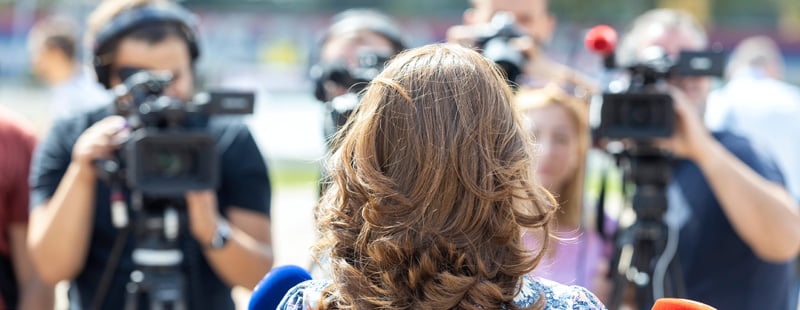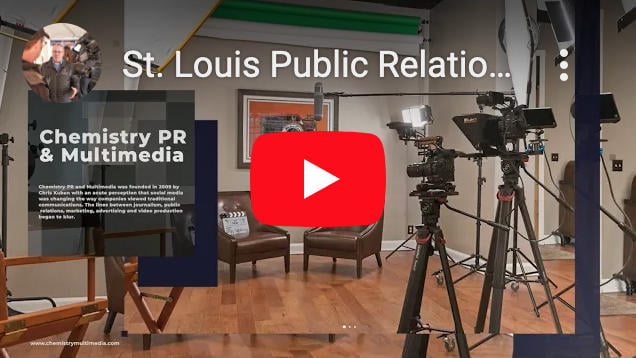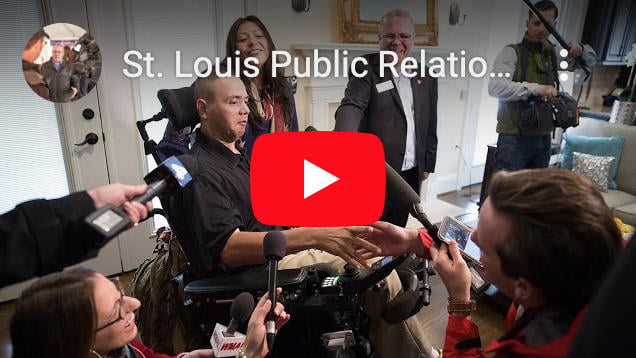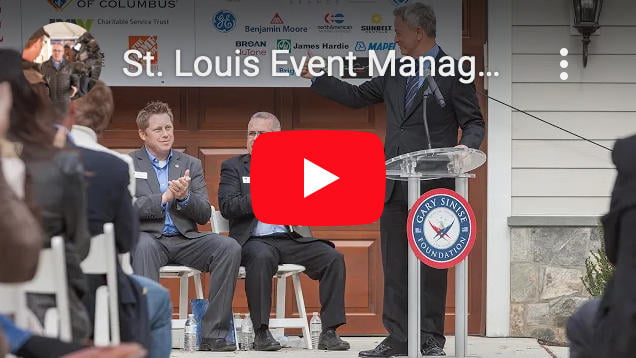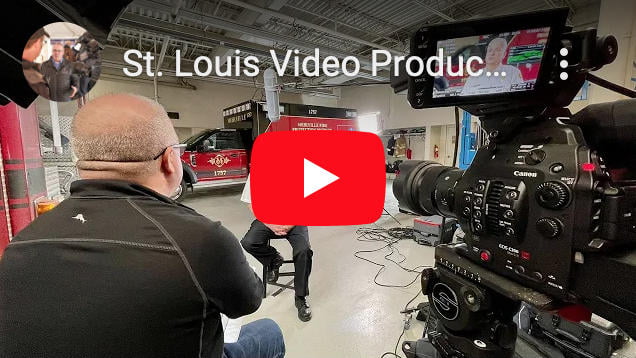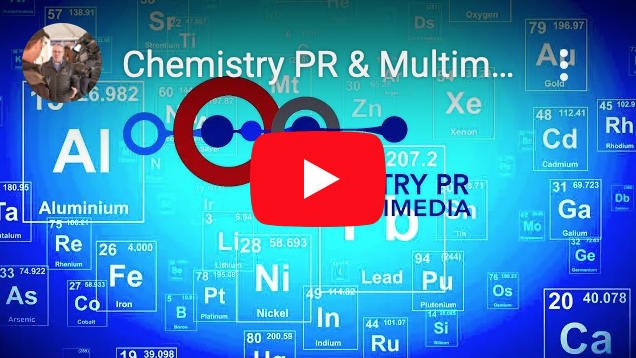Spokespeople Need Ongoing Media Training
When choosing a spokesperson for your organization, media training is invaluable, regardless of your role, the issue being addressed, or the setting of potential interviews that may take place.
Even more critical for leadership, whose job plays out behind the scenes is the responsibility to prepare the spokesperson for interviews. If a CEO conducts all the interviews but the person in charge of media relations is tasked with drafting messaging and prepping the CEO, he or she had better be well trained and understand how best to respond to questions from the media!
Spokespeople who are poorly trained can ultimately harm an organization through their inability to communicate effectively. Often, their lack of training shows through when they make crucial mistakes in an interview – mistakes that can be avoided with proper media training. Here are 5 reasons why media training is important for any organization and its spokespeople.
 Help Sharpen Your Message Through Media Training
Help Sharpen Your Message Through Media Training
Many individuals who are new to media relations fall into the trap of trying to share too many messages in a single media appearance. Sometimes this stems from the novelty of the experience – “We don’t get a lot of media coverage, so we’re going to make the most of this chance.” Other times, in a crisis, for example, it stems from a position of defensiveness and an urge to distract or deflect attention away from the problem.
Regardless of the situation and reason for it, having too many messages is confusing for the inexperienced spokesperson and, ultimately, the reporter. When the interview subject is asked a question, he or she must decide which points to make or which direction to go with the answer. More importantly, he or she must know what points or direction to avoid. For the reporter, the story often gets muddled as the interviewee goes back and forth between the various messages.
Media Training will help your organization craft a single “Home Base” message and a short list of supporting messages. This format makes it easier for the spokespeople to have a specific direction for interviews. A message map with your Home Base message at its core, along with additional positive proof points (supporting messages), will help a spokesperson know exactly how to respond to almost any question asked.
For example, imagine that a United Way spokesperson wants to convey three messages:
- We financially support 160 agencies.
- We use the money locally.
- From each dollar, 91 cents goes directly to services.
While all these messages are true and important, knowing exactly which one to highlight can be confusing during an interview. It is best to prepare the spokesperson with one, simple “home base” message: “The United Way seeks to improve lives [1].” Those other three messages can now be used in any way to support that main message.
The spokesperson might say, “Our goal is to improve lives. We do that by supporting 160 agencies that focus on education, income and health—the building blocks for a good quality of life. We help people right here in our community because all the money stays in our local area. And we help people efficiently because 91 cents of every dollar directly supports the services we provide.” These sub-messages all relate to the “home base” message.
 Respond Better to Questions
Respond Better to Questions
Through practice scenarios, good media training helps a team become adept at using the Home Base message to respond to most questions a reporter or interviewer might ask. If the interview starts to steer off topic, good media training will help a spokesperson know how to bring the conversation back to the main message point.
When managing a crisis or being challenged by a reporter, media training can help keep emotions at bay and create a calm environment in which to respond to challenging questions. The best media training teaches a person how to respond (and how not to respond!) in such a way that acknowledges the question but also reiterates the positive points that need to best hared.
For example, if a company is about to announce layoffs, the first challenging question will likely be the ‘why’ question. Media training will help teach how to acknowledge the bad (layoffs will happen) while also highlighting the good (perhaps the company is providing placement assistance for affected workers).
Media Training can also teach a team to recognize when returning to the “Home Base” isn’t appropriate. Many interviewees are afraid to respond with a “yes” or “no.” This is unfortunate. Sometimes, it’s the most effective way to start an answer. The question is answered, and now an explanation can be offered for that answer… .
Good media training will also help spokespeople understand they can’t always move back to the main message. If there is no easy way to transition to your “home base” message, don’t try. Simply answer the basic question and move on.
Learn What Not to Say
We’ve all seen it on the news. A politician is caught up in a scandal and when the media start to ask about it, the response is “No comment.” Or an important figure is fired from their job and the response is, “I’m not at liberty to say.”
One of the key things any good media training session will remind you of is that these are not acceptable answers. But it’s certainly understandable why, when put on the spot, a spokesperson might feel like the only option is to avoid the question by not answering it!
With proper media training, spokespeople will learn how to address the media by explaining why they’re not at liberty to directly answer a question. They’ll learn how to avoid responses that could get them – or the company – in hot water and take control of the interview in a more positive manner.
 Polish Your Delivery
Polish Your Delivery
Media Training also helps spokespeople learn the often overlooked small details that go beyond the messaging but can make or break an interview.
For example, media trainers will coach spokespeople on what types of clothing is most appropriate to wear and what colors work well on camera.
They’ll help make spokespeople aware of unconscious habits, such as verbal tics like saying “um” or a tendency to minimize their presence by slumping in their seat. Coaching spokespeople on how to break these habits is helpful in making sure the person behind the microphones comes across as the polished, professional individuals that they are.
Build Your Brand
Having well-trained spokespeople can go a long way towards building a company’s brand, establishing its credibility and building the expertise of its spokespeople. Reporters are always looking for experts to whom they can turn to when a certain story breaks. Or they’ll look for stories to cover on a slow news day.
Once it becomes apparent that your spokespeople make great interview subjects, don’t be surprised to find the media contacting you to ask for help in completing a story they’re working on!
 Chris Kuban started Chemistry PR and Multimedia with a vision to effectively formulate corporate and non-profit brands across the country. He is an expert in Media Relations, Event Management and video production. Working with a team of local and national suppliers, vendors, employees, and consultants has allowed him to coordinate more than 246 national events that help deliver the ROI his clients seek. Follow him on Twitter or connect with him on LinkedIn. Chris is proud that his firm is ranked one of the Best St. Louis Public Relations Firms in the region.
Chris Kuban started Chemistry PR and Multimedia with a vision to effectively formulate corporate and non-profit brands across the country. He is an expert in Media Relations, Event Management and video production. Working with a team of local and national suppliers, vendors, employees, and consultants has allowed him to coordinate more than 246 national events that help deliver the ROI his clients seek. Follow him on Twitter or connect with him on LinkedIn. Chris is proud that his firm is ranked one of the Best St. Louis Public Relations Firms in the region.

